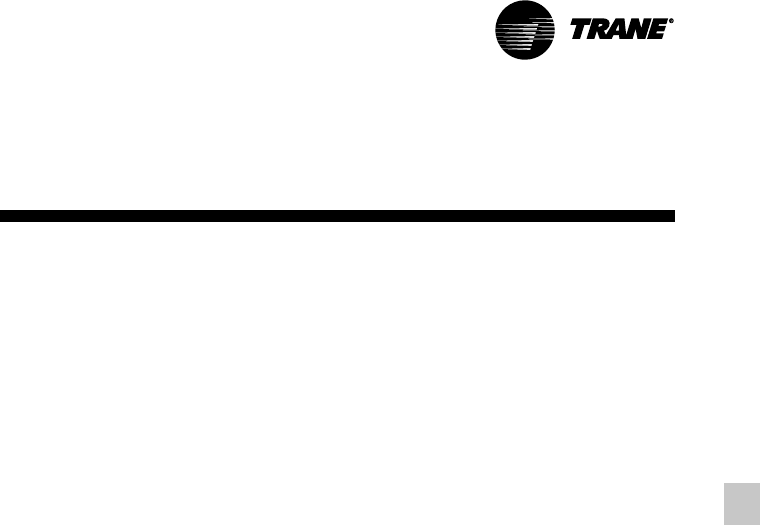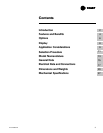
9
RLC-PRC020-EN
Condenser Water Temperatures
Reduced sensitivity to condenser water
startup temperatures is one major
enhancement in the newest-generation
water-cooled Series R chiller. With the
model RTHD chiller, a condenser water
control method is necessary only if the
unit starts with entering water
temperatures below 55°F (12.8°C), or
between 45°F (7.2°C) and 55°F (12.8°C),
when a temperature increase of 1°F
(0.56°C) per minute to 55°F (12.8°) is not
possible.
When the application requires startup
temperatures below the prescribed
minimums, a variety of options are
available. To control a 2-way or 3-way
valve, Trane offers a Condenser
Regulating Valve Control option for the
CH530 controls. This option enables the
CH530 controls to send a signal for
opening and closing the valve as
necessary to maintain chiller differential
pressure. The 2-way valves are available
as a ship-with option. Tower bypass is
also a valid control method if the chiller
temperature requirements can be
maintained.
Trane Series R chillers start and operate
successfully and reliably over a range of
load conditions with controlled entering
condenser water temperature. Reducing
the condenser water temperature is an
effective method of lowering chiller
Application
Considerations
power input required, but the ideal
temperature for optimizing total system
power consumption will depend on the
overall system dynamics. From a system
perspective, some improvements in
chiller efficiency may be offset by the
increased tower fan and pumping costs
required to achieve the lower tower
temperatures.
Contact your local Trane
systems solution provider for more
information on optimizing system
performance.
The minimum acceptable refrigerant
pressure differential between condenser
and evaporator is 25 psid. The chiller
control system will attempt to obtain and
maintain this differential at startup, but
for continuous operation a design
should maintain a 25°F (13.9°C)
differential from evaporator leaving
water temperature to condenser leaving
water temperature.
Variable Evaporator Flow and Short
Evaporator Water Loops
Variable evaporator flow is an energy-
saving design strategy which has quickly
gained acceptance as advances in chiller
and controls technology have made it
possible. With its linear unloading
compressor design and advanced CH530
controls, the RTHD has excellent
capability to maintain leaving water
temperature control within +/-0.5°F
(0.28°C) , even for systems with variable
evaporator flow and small chilled water
volumes.
Some basic rules should be followed
whenever using these system design
and operational savings methods with
the RTHD. The proper location of the
chilled water temperature control sensor
is in the supply (outlet) water. This
location allows the building to act as a
buffer, and it assures a slowly changing
return water temperature. If there is
insufficient water volume in the system
to provide an adequate buffer,
temperature control can be lost,
resulting in erratic system operation and
excessive compressor cycling. To ensure
consistent operation and tight
temperature control, the chilled water
loop should be at least two minutes. If
this recommendation cannot be
followed, and tight leaving water
temperature control is necessary, a
storage tank or larger header pipe
should be installed to increase the
volume of water in the system.
For variable primary flow applications,
the rate of chilled water flow change
should not exceed 10 percent of design
per minute to maintain +/-0.5°F (0.28°C)
leaving evaporator temperature control.
For applications in which system energy
savings is most important and tight
temperature control is classified as
+/-2°F (1.1°C), up to 30 percent changes
in flow per minute are possible. Flow
rates should be maintained between the
minimum and maximum allowed for
any particular chiller configuration.


















